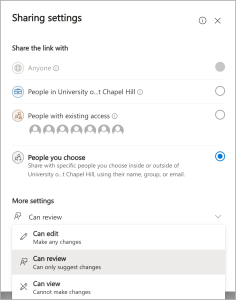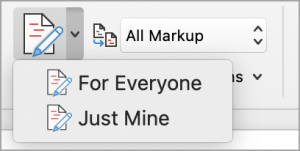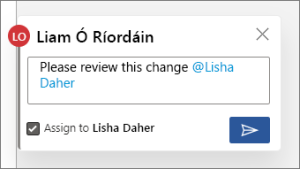Real-time collaboration is one of the best ways to use Microsoft Word. Whether it’s crowdsourcing meeting notes, co-writing a report or getting a second pair of eyes to proofread, we usually do our best work with others.
 Collaborating in the cloud with files saved in OneDrive or SharePoint not only saves you from emailing files back and forth and trying to figure out who changed what and when, it also gives you access to more powerful collaboration tools.
Collaborating in the cloud with files saved in OneDrive or SharePoint not only saves you from emailing files back and forth and trying to figure out who changed what and when, it also gives you access to more powerful collaboration tools.
And new features and improvements have made cloud collaboration easier, and better, than ever. Word’s features add up to a powerful collaborative tool that makes it easy to create, edit and review documents with multiple people at once.
Here are three new-and-improved features to help you supercharge your collaboration.
Review mode
 Late last year, Microsoft added a new feature called Review Mode. Review mode makes it even quicker to find the right settings for collaboration.
Late last year, Microsoft added a new feature called Review Mode. Review mode makes it even quicker to find the right settings for collaboration.
Before, when you shared a Word document, you could give either “edit” or “view” permissions. Granting “edit” permissions meant the recipient could make any and all changes, while “view” meant they could make none. The “review” permission is a happy middle ground — allowing the people you share with to suggest edits via track changes or add and reply to comments, but not make any changes directly.
And even if a file was shared with you with edit permissions, you can now quickly switch to “reviewing.” By default, if you have edit rights, you are placed in Editing Mode. Switch to “review” by choosing the Editing button in the upper right next to the Share button.
When you switch to “reviewing,” Word will turn on track changes and limit your ability to edit directly. Switching modes is a quick way for you to toggle track changes on and off. This is great for when you do want to make some changes directly, but leave others as tracked changes to make it easier for your collaborators to see what you’ve changed.
Track changes for just yourself
Speaking of tracking changes, if you weren’t paying close attention, you might have missed this feature update from a year ago: the ability to just track your own changes instead of turning on tracked changes for everyone.
 To choose to track just your own changes, click Track Changes under the Review menu item, then choose Just Mine. Now, all your edits will appear as tracked changes, even to other collaborators. Other collaborators can choose to track their own changes or make edits without tracking turned on.
To choose to track just your own changes, click Track Changes under the Review menu item, then choose Just Mine. Now, all your edits will appear as tracked changes, even to other collaborators. Other collaborators can choose to track their own changes or make edits without tracking turned on.
Turning on track changes for just yourself makes sense in a lot of situations, such as when you are asked to do the review and not the document creation.
Assign tasks in comments
Comments are an amazing collaboration tool, making it easy to ask questions and solicit feedback from your collaborators. With comments, you can provide feedback on a document without changing the text or answer questions with context right at hand. And with @ mentions, you can quickly direct comments and questions to a specific person. To use an @ mention, first add a new comment. Then, type @ with their email address or name, or just choose from your most comment contacts. When you send your comment, it will appear in the document and the person you tagged will receive an email with a preview of the comment and a link to the document.

Recently, @ mentions in comments got even more powerful. Now in all versions of Word, after you choose a person to mention, you can assign the comment as a task. Just check the box under the comment that reads, “Assign to.”
Assigned tasks will appear in Planner and To Do, helping the assignee keep track of their action items. You can even reassign tasks to other team members, if necessary. To mark the task as completed, hover over the circle at the top of the comment box. The circle will transform into the Resolve task button. Just like any comment, you can reopen a resolved task — just open the Comment pane, click the resolved comment, then choose Reopen.
Assigning tasks in comments was previously only available via the web version of Word.
Want to learn more Microsoft Word tips and tricks? ITS has another tool that can help: LinkedIn Learning. Log in for free using your Onyen and search for Microsoft Word to find the right course for you. Options range from one-minute quick tips to 10-hour master classes.
